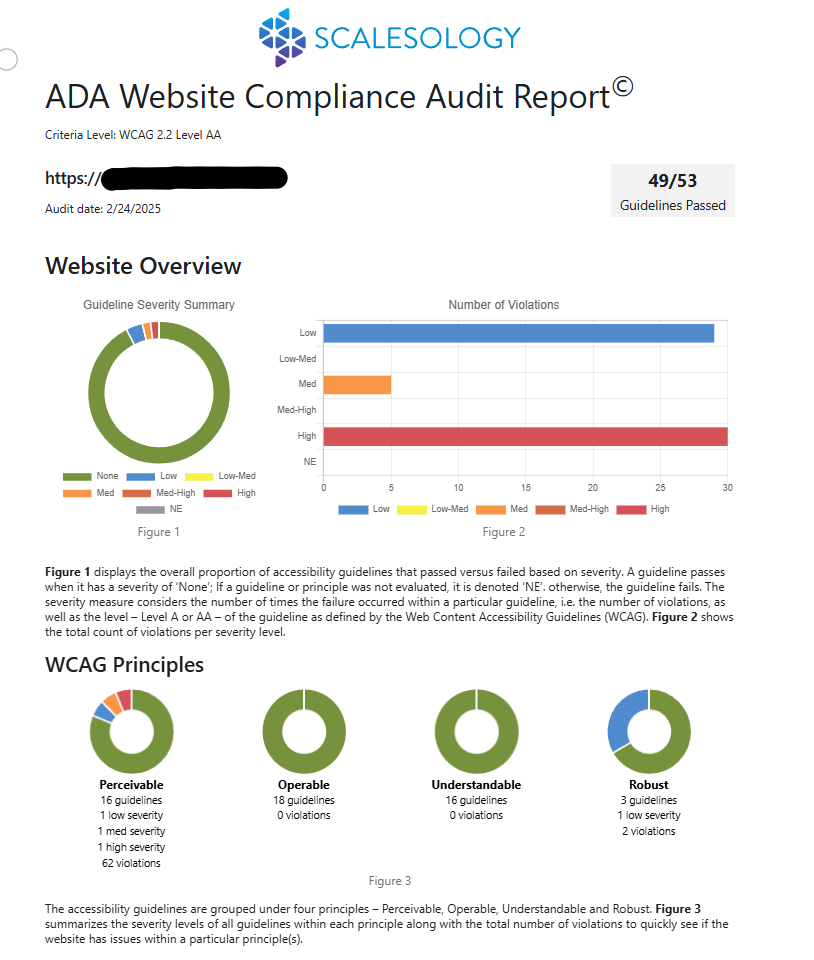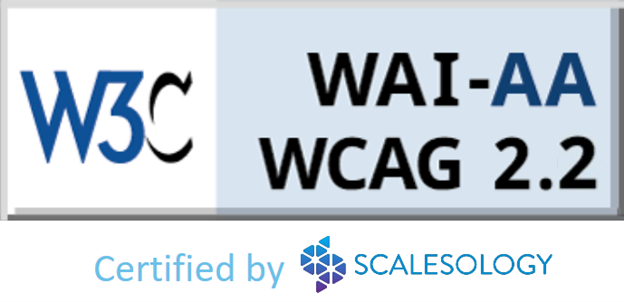Is Your Website ADA-Compliant or Just Overlayed?
- Ken Scales

- Jun 24
- 3 min read

The Illusion of Instantly being ADA Compliant
Accessibility overlays, like AccessiBe, UserWay, AudioEye, EqualWeb and others that promise fast, inexpensive Web Content Accessibility Guidelines (WCAG) conformance through adding and external JavaScript snippet. Their pitch is compelling: achieve full compliance and avoid legal trouble without touching your codebase. But beneath the marketing, these solutions are little more than band‑aids, temporary fixes that obscure foundational issues and frequently fail both users and the compliance under the law.
Overlay Shortcomings: Why They Fall Short
They mask symptoms—not sources. Overlays inject temporary fixes atop broken Accessible Rich Internet Applications (ARIA) roles, missing alt attributes, and poor keyboard flow. They don’t remediate underlying code or structure, often correcting only superficial elements like contrast or font size ( Accessible Web, Arizona State University, Smack Happy).
They miss most accessibility issues. Overlay providers typically address only 20–40% of WCAG violations—leaving the majority of issues untouched, including form labeling problems, non-descriptive link text, and missing captions (American Foundation for the Blind).
Poor experience for assistive-tech users. Overlays can override native assistive technology settings, interfere with screen readers, and break keyboard navigation, leading many users to abandon overlay-enhanced sites (WebAIM Survey, Colorado Virtual Library, TPGI).
False legal confidence and continued lawsuits. Sites using overlays remain targets of litigation, including against AccessiBe and UserWay. Notably, the FTC fined AccessiBe $1 million for deceptive claims, and overlays are explicitly not considered ADA compliance by courts (Federal Trade Commission).
Performance degradation. Overlays inject additional JavaScript, often hosted externally, leading to slower page loads, higher bounce rates, and poor user experience. Significant delays and even crashes on older devices have been reported (AccessiTree).
Privacy and security concerns. Overlay tools frequently collect sensitive user data, tracking whether a user identifies as having a disability or uses assistive tech, without explicit consent. This raises GDPR/CCPA compliance issues and may expose site operators to privacy lawsuits (Smack Happy, AccessiTree).
What the Data Reveals
In 2023, over 900 businesses using an accessibility widget or overlay faced lawsuits , an increase of 62% over the 575 cases in 2022 (UsableNet).
In WebAIM’s 2021 survey, 67% of respondents—and 72% of users with disabilities—rated overlays as “not effective” (WebAIM).
Overlay technology addresses only a minority of violations, with many issues remaining hidden beneath the surface (Audioeye).
Overlay vs. Real Accessibility: A Side-by-Side
Aspect | Overlays | Code‑First Accessibility |
WCAG Coverage | ~20–40%, cosmetic | Full WCAG version 2.2 AA+ compliance |
Assistive Tech Support | Poor; may disrupt screen readers | Works seamlessly with screen readers |
Legal Protection | Limited; lawsuits continue | Stronger defense via documented fixes |
UX Improvement | Temporary, often buggy | Stable, inclusive, beneficial to all |
Maintenance | Static scripts; often neglected | Built into workflows, tracked, tested |
A Better Path: Foundations Over Facades
Conduct a thorough audit—use both automated tools and manual inspection aligned to WCAG version 2.2 AA standards, as recommended by Scalesology and Smack Happy Design.

Figure 1: Scalesology ADA Website Compliance Report snippet Fix code at the source—address HTML semantics, alt text, ARIA roles, keyboard navigation, form labels, focus management, and structural elements.
Include accessibility in development cycles—document changes, enforce checks, and incorporate accessibility into every release.
Communicate transparently—publish an accessibility statement and provide contact details for reporting issues.
Why This Matters: Equity, Experience, and Enterprise Value
True user inclusion: Code-level accessibility empowers all users equally, with no workaround needed.
Reduced legal risk: Proactive remediation offers stronger protection than overlay illusions.
Improved User Experience (UX) & Search Engine Optimization (SEO): Accessible websites tend to perform better across all core web metrics.
Brand benefit: A commitment to accessibility strengthens brand reputation and team excellence.
Conclusion: Skip the Shortcut, Embrace Real Accessibility
Accessibility overlays may seem convenient, but they provide a false sense of compliance while falling short of actual inclusion. They mask underlying issues, create friction for users with disabilities, and leave businesses vulnerable to lawsuits and reputational damage.
The best practice is a sustainable, code-first approach to accessibility one that’s user-tested, standards-compliant, and baked into your development process. That’s the only way to ensure lasting ADA compliance, legal confidence, and an equitable experience for all users.
Ready to see if your website is WCAG version 2.2 level AA compliant?
Contact us here at Scalesology, we have process that involves a combination of both manual and automated accessibility testing to ensure that all issues are correctly being identified. Our ADA Website Compliance Audit is a series of accessibility tests that ensures your website is more operable and navigable for everyone.
References
Scalesology: https://www.scalesology.com/post/is-your-website-ada-compliant
Accessible Web –https://accessibleweb.com/web-accessibility-news/do-away-with-overlays/
Arizona State University – https://accessibility.asu.edu/overlays
Smack Happy – https://smackhappy.com/2022/03/common-myths-about-accessibility-overlays/
American Foundation for the Blind – https://www.afb.org/blog/entry/accessibility-overlay-promises-and-pitfalls
Colorado Virtual Library – https://www.coloradovirtuallibrary.org/technology/accessibility/the-skinny-on-accessibility-overlays/
TPGi –https://www.tpgi.com/accessibility-overlays-in-digital-content/
Federal Trade Commission – https://www.ftc.gov/news-events/news/press-releases/2025/01/ftc-order-requires-online-marketer-pay-1-million-deceptive-claims-its-ai-product-could-make-websites
AccessiTree – https://www.accessitree.com/accessibility-articles/the-deceptive-facade-of-accessibility-overlays/
UsableNet 2023 ADA Report – https://3280432.fs1.hubspotusercontent-na1.net/hubfs/3280432/2024-ADA-Report-Digital-Accessibility-Lawsuits.pdf
AudioEye – https://www.audioeye.com/post/accessibility-overlay/
Scalesology: https://www.scalesology.com/ada-website-compliance



Comments